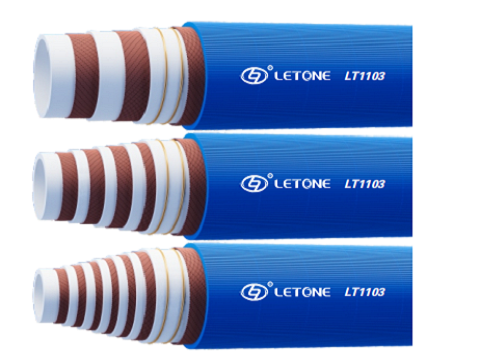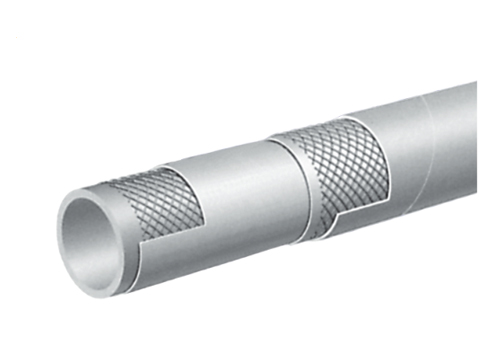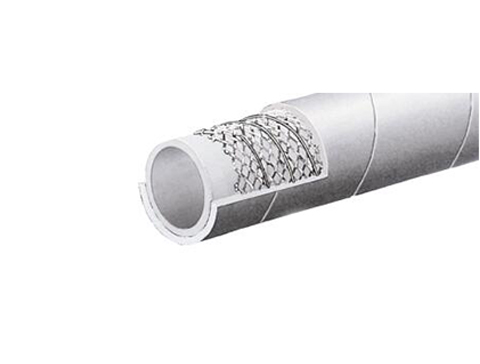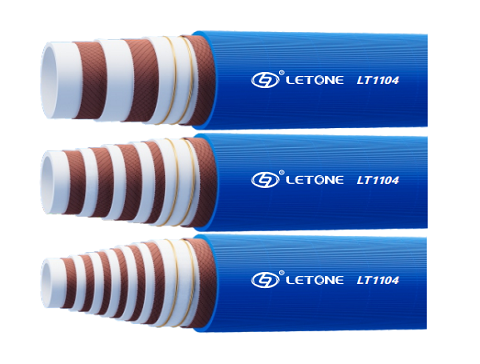API oil hose: In the huge transportation network of the oil industry, API oil hose is like the "steel blood" connecting oil wells and refineries, carrying the core mission of energy transmission. The hose manufactured in strict accordance with international standards such as API 7K and API 16C is specially designed for media such as oil, natural gas and drilling mud. Its bursting pressure can reach more than 4 times the working pressure, and it can still maintain stable performance under extreme temperature differences from -45℃ to 121℃. The six-layer high-strength steel wire winding structure combined with the NBR/PVC composite inner rubber layer not only achieves 60MPa ultra-high pressure transmission capacity, but also controls the leakage rate below 0.005% through molecular-level sealing technology. From land oil pipelines to offshore drilling platforms, API oil hoses have a "zero accident" engineering record to ensure the continuous beating of the global energy artery. Anti-corrosion revolution: The rapid aging problem of traditional oil hoses in sulfur-containing oil and gas fields has given rise to a new generation of API oil hoses. Material revolution. For high sulfur working conditions (H2S concentration > 20%), the sulfur corrosion-resistant hose we developed uses a fluororubber (FKM) lining layer and a copper-plated steel wire reinforcement layer. After NACE TM0177 standard test verification, its ability to resist hydrogen sulfide stress corrosion has increased by 300%, and its service life has exceeded the 5-year mark. What is more noteworthy is the breakthrough in dynamic protection technology - in the harsh environment of desert oil fields with a temperature difference of 70°C between day and night, the weather-resistant polyurethane layer on the outside of the hose can resist ultraviolet rays and wind and sand wear, and the inner conductive carbon black material reduces the risk of static electricity accumulation to below 0.1kV/m, perfectly solving the transportation problem in flammable and explosive scenes.
 Full scene coverage:
The scene adaptability of API oil hoses is redefining the boundaries of oil transportation. In the Arctic oil and gas fields, the cold-resistant hose we developed uses a modified nitrile rubber formula, and the bending radius can still maintain 85% of the nominal value at a low temperature of -55℃; for shale gas fracturing operations, the inner wall ceramic coating technology of the ultra-wear-resistant hose can withstand the continuous impact of sand particles at a speed of 15m/s. These innovative achievements have been successfully applied to landmark projects such as the Siberian oil pipeline and the deep-sea drilling platform in the Gulf of Mexico, and have safely transported more than 5 billion cubic meters of oil and gas.
Scientific selection:
A three-dimensional selection model needs to be established to select API oil hoses: the medium dimension needs to detect sulfur content, water content and solid particle concentration; the pressure dimension should calculate the peak pressure × 1.5 times the safety factor; the environmental dimension needs to comprehensively consider temperature, bending frequency and external impact risks. For example, the catalytic cracking unit of the refinery recommends the use of EPDM rubber hoses with a temperature resistance of 150℃, while the oil sand transportation system should match a 6-layer steel wire winding structure with a ceramic lining.
Full scene coverage:
The scene adaptability of API oil hoses is redefining the boundaries of oil transportation. In the Arctic oil and gas fields, the cold-resistant hose we developed uses a modified nitrile rubber formula, and the bending radius can still maintain 85% of the nominal value at a low temperature of -55℃; for shale gas fracturing operations, the inner wall ceramic coating technology of the ultra-wear-resistant hose can withstand the continuous impact of sand particles at a speed of 15m/s. These innovative achievements have been successfully applied to landmark projects such as the Siberian oil pipeline and the deep-sea drilling platform in the Gulf of Mexico, and have safely transported more than 5 billion cubic meters of oil and gas.
Scientific selection:
A three-dimensional selection model needs to be established to select API oil hoses: the medium dimension needs to detect sulfur content, water content and solid particle concentration; the pressure dimension should calculate the peak pressure × 1.5 times the safety factor; the environmental dimension needs to comprehensively consider temperature, bending frequency and external impact risks. For example, the catalytic cracking unit of the refinery recommends the use of EPDM rubber hoses with a temperature resistance of 150℃, while the oil sand transportation system should match a 6-layer steel wire winding structure with a ceramic lining.







